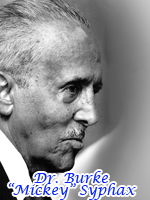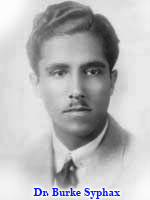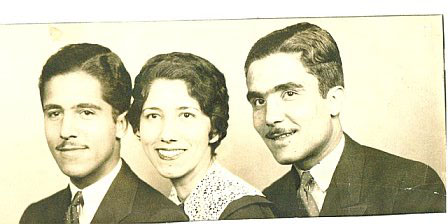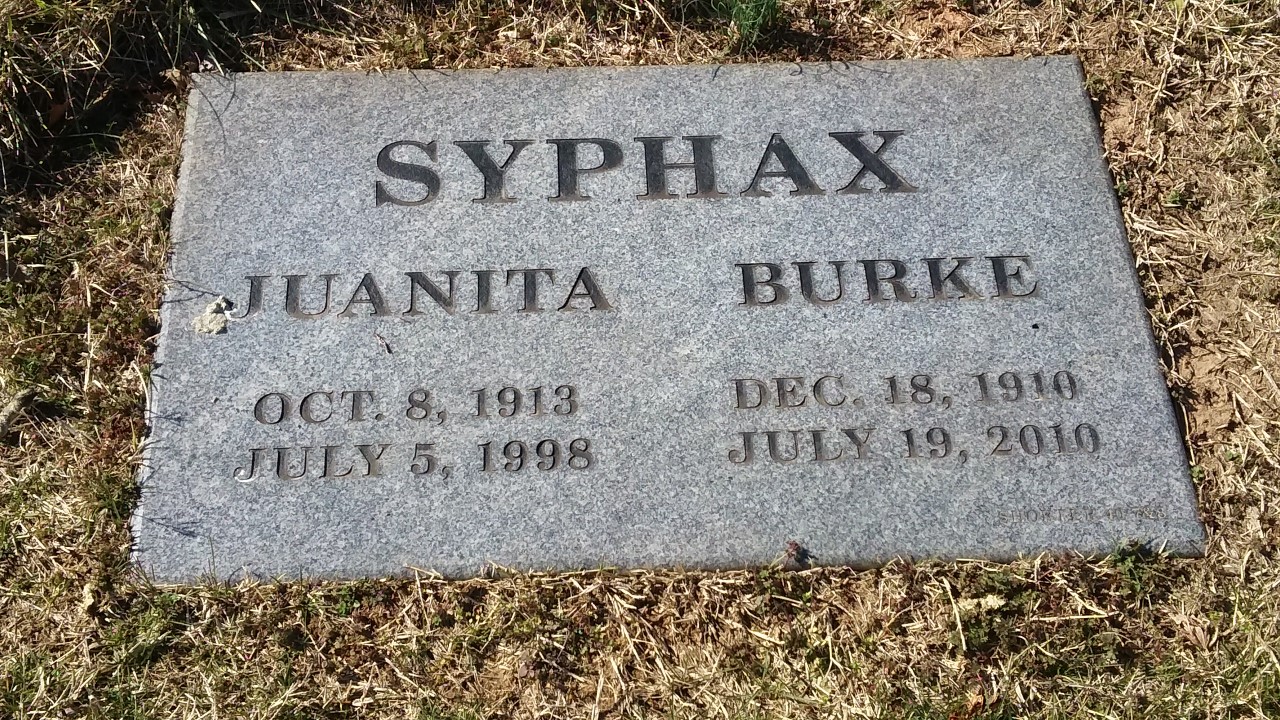In 1950, Dr. Syphax was a young faculty member at Howard when Charles R. Drew -- whose pioneering work on blood-plasma storage techniques revolutionized the medical field -- died suddenly after a car accident on his way to a conference in Alabama.
At the time, Drew was head of Howard's surgery department and a powerful force in directing the school's surgical training program, which had been established in 1936. His death left a void sensed by colleagues as well as students.
"You wondered: Could the school continue to exist? He cast that kind of shadow," LaSalle D. Leffall Jr., a medical student at the time, said of Drew.
In a turbulent seven-year period after Drew's death, three chairmen came and went before Dr. Syphax took the helm in 1957. He led for 13 years, continuing the programs Drew had initiated and providing the steady leadership that ensured Howard would continue to train surgeons.
"We just picked up and went on," Dr. Syphax told Howard Magazine in 2008. "More or less, you do what you've got to do. You don't think of it as insurmountable. You just think about what you need to do and keep going."
He also led Howard's general surgery division and directed its residency program from 1950 to 1970. In that capacity, he taught thousands of medical students and trained an estimated 90 percent of black surgeons in the Washington area. He built a reputation as a doctor and professor who didn't let ego get in the way of doing what was best for patients.
"He knew when to operate and knew when not to operate, which is what really separates the supreme surgeon from the mediocre surgeon," said Clive Callender, a former student of Dr. Syphax's who went on to join Howard's faculty and become a leading expert in organ transplant medicine.
In the operating room, Dr. Syphax was known for his dexterity and talent for making difficult diagnoses. He was particularly gifted at deciphering the source of pain in a patient's midsection, a skill that earned him the nickname "Master of the Abdomen." After leaving the surgery department chairmanship in 1970, he continued serving as a senior professor at Howard until his retirement in 1978.
Burke Syphax was born into a family with deep Washington area roots on Dec. 18, 1910, in the District's LeDroit Park neighborhood. The Syphaxes trace their roots to matriarch Maria Syphax, who was born in the early 19th century. According to family legend, which is generally not disputed, she was the daughter of George Washington Parke Custis -- the adopted grandson of George Washington -- and an enslaved woman.
Dr. Syphax graduated from Dunbar High School in 1928 and four years later received a bachelor's degree at Howard, where he played tennis and basketball.
He graduated from Howard's medical school in 1936 and interned at Freedmen's Hospital, which became Howard University Hospital. In 1937, he became the second general surgery resident in Howard's newly formed surgical training program.
After completing a fellowship in the early 1940s at the Strong Memorial Hospital in Rochester, N.Y., Dr. Syphax returned to Washington.
The annual Charles R. Drew Lecture at Howard's medical school was renamed the Drew-Syphax Lecture and Seminar in the late 1970s. Dr. Syphax received numerous awards and was a member of many professional organizations, including the Washington Academy of Surgery and the National Medical Association. He was a fellow of the American College of Surgeons.
His wife of 59 years, the former Sarah Juanita Jamerson, died in 1998.
Survivors include three sons, Michael Burke Syphax, Gregory Custis Syphax and Stephen Wyatt Syphax, all of Washington; six grandchildren; and one great-granddaughter.
"He had near-impeccable surgical judgment -- an amalgam of knowledge, intelligence, experience, analysis and restraint," said Leffall, who succeeded Dr. Syphax as Howard's surgery department chairman in 1970 and went on to become the first African American president of both the American College of Surgeons and the American Cancer Society.
"Those of us who trained under him can never forget that."
In 1950, Dr. Syphax was a young faculty member at Howard when Charles R. Drew -- whose pioneering work on blood-plasma storage techniques revolutionized the medical field -- died suddenly after a car accident on his way to a conference in Alabama.
At the time, Drew was head of Howard's surgery department and a powerful force in directing the school's surgical training program, which had been established in 1936. His death left a void sensed by colleagues as well as students.
"You wondered: Could the school continue to exist? He cast that kind of shadow," LaSalle D. Leffall Jr., a medical student at the time, said of Drew.
In a turbulent seven-year period after Drew's death, three chairmen came and went before Dr. Syphax took the helm in 1957. He led for 13 years, continuing the programs Drew had initiated and providing the steady leadership that ensured Howard would continue to train surgeons.
"We just picked up and went on," Dr. Syphax told Howard Magazine in 2008. "More or less, you do what you've got to do. You don't think of it as insurmountable. You just think about what you need to do and keep going."
He also led Howard's general surgery division and directed its residency program from 1950 to 1970. In that capacity, he taught thousands of medical students and trained an estimated 90 percent of black surgeons in the Washington area. He built a reputation as a doctor and professor who didn't let ego get in the way of doing what was best for patients.
"He knew when to operate and knew when not to operate, which is what really separates the supreme surgeon from the mediocre surgeon," said Clive Callender, a former student of Dr. Syphax's who went on to join Howard's faculty and become a leading expert in organ transplant medicine.
In the operating room, Dr. Syphax was known for his dexterity and talent for making difficult diagnoses. He was particularly gifted at deciphering the source of pain in a patient's midsection, a skill that earned him the nickname "Master of the Abdomen." After leaving the surgery department chairmanship in 1970, he continued serving as a senior professor at Howard until his retirement in 1978.
Burke Syphax was born into a family with deep Washington area roots on Dec. 18, 1910, in the District's LeDroit Park neighborhood. The Syphaxes trace their roots to matriarch Maria Syphax, who was born in the early 19th century. According to family legend, which is generally not disputed, she was the daughter of George Washington Parke Custis -- the adopted grandson of George Washington -- and an enslaved woman.
Dr. Syphax graduated from Dunbar High School in 1928 and four years later received a bachelor's degree at Howard, where he played tennis and basketball.
He graduated from Howard's medical school in 1936 and interned at Freedmen's Hospital, which became Howard University Hospital. In 1937, he became the second general surgery resident in Howard's newly formed surgical training program.
After completing a fellowship in the early 1940s at the Strong Memorial Hospital in Rochester, N.Y., Dr. Syphax returned to Washington.
The annual Charles R. Drew Lecture at Howard's medical school was renamed the Drew-Syphax Lecture and Seminar in the late 1970s. Dr. Syphax received numerous awards and was a member of many professional organizations, including the Washington Academy of Surgery and the National Medical Association. He was a fellow of the American College of Surgeons.
His wife of 59 years, the former Sarah Juanita Jamerson, died in 1998.
Survivors include three sons, Michael Burke Syphax, Gregory Custis Syphax and Stephen Wyatt Syphax, all of Washington; six grandchildren; and one great-granddaughter.
"He had near-impeccable surgical judgment -- an amalgam of knowledge, intelligence, experience, analysis and restraint," said Leffall, who succeeded Dr. Syphax as Howard's surgery department chairman in 1970 and went on to become the first African American president of both the American College of Surgeons and the American Cancer Society.
"Those of us who trained under him can never forget that."
Family Members
Sponsored by Ancestry
Advertisement
Explore more
Sponsored by Ancestry
Advertisement









